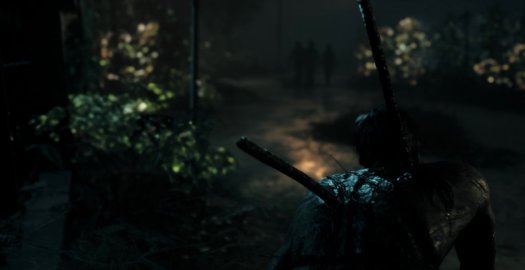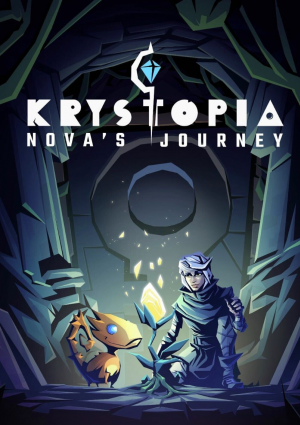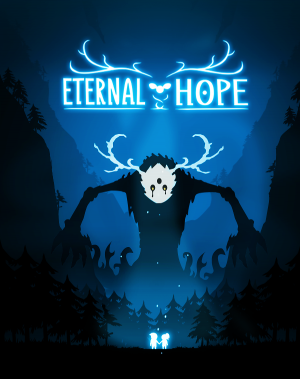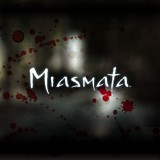Review for The Dark Pictures Anthology: Little Hope

Little Hope is the second episode in the ongoing Dark Pictures Anthology, a collection of standalone games begun when Supermassive Games broke away from Sony and joined forces with Bandai Namco. Even before that, however, most of the studio’s yearly releases since 2015’s Until Dawn stuck fairly closely to the same cinematic, choice-driven horror formula. Little Hope similarly continues to iterate rather than innovate, and for those who have enjoyed the British developer’s output over the years, that’s a good thing. Anyone who prefers more substantial gameplay to round out the narrative experience still won’t find it here, though the gameplay that is here shines a bit brighter than in the past. This time around, we take a detour to a small, abandoned New England town, a shift that isn’t able to capitalize as well on spooky atmosphere as its predecessors, but does offer a highly engaging story about seventeenth-century North American witch trials that’s far more satisfying than the series debut.
The narrative, once again bookended and occasionally interrupted by the framing device of an omniscient Curator, follows four college students and their professor on an ill-fated class trip. When their bus gets rerouted due to a road closure, they end up crashing near the town of Little Hope, somewhere in the New England woods in the middle of the night. Though the bus driver mysteriously vanishes, the five passengers, initially separated, soon regroup and decide that heading into town is their best bet at contacting the outside world for help, particularly since a thick fog that seems to be following them inexplicably leads them right back toward town every time they try to turn away.
The game also dabbles in multiple timelines, with our five protagonists regularly visited by visions from two different periods in the town’s history. It turns out Little Hope was home to several infamous witch trials in the late seventeenth century, and the group experiences the events from this horrific past first-hand by interacting with the spirits of former town residents from that time – who, oddly, look just like them. There’s also a tragic house fire that decimated most of a family in the late 1970s that plays an occasional role in the proceedings, again featuring apparent doppelgangers of the cast.
My initial reaction to Little Hope was that, when compared to previous Supermassive games, the new setting provided a lot fewer opportunities for a frightening atmosphere. With the town sitting empty and abandoned in the middle of a thick forest, an awful lot of time is spent navigating down a forest path here or a stretch of deserted highway there, with little variety. Even when the characters do chance upon buildings they are able to enter, there are only so many new ways to restyle “empty ruined house” before it loses its tension. Instead, the game relies on lots of jump scares – which, don’t get me wrong, did serve their intended purpose and startled me – but they are, by design, thrills of the cheapest variety and less satisfying in an interactive medium.
I suppose some of those early feelings also came down to the choice of subject matter and the characters involved. Many conversations between the bus crash survivors come across as unrelatable and therefore awkward to influence; all five characters already have established relationships with each other before the game begins, but you, as the player, do not, which makes you basically a clueless outsider when choosing their timed dialog response options toward each other. As before, this game utilizes a trait system, where a character’s personality grows and adapts according to the decisions you make for them. But here it feels at once overwhelming and of little consequence when messages about updated traits flash across the screen as a result of almost every single decision you make, with nothing more to go on than a brief one-word characterization of what type of response you’re choosing.
The other initial problem lies in the choice of story: witch trials, particularly when you know they happened over 300 years in the past, aren’t well-known for their ability to conjure up a sustained feeling of fright. But while I still believe this to be true two full playthroughs and eleven hours later, I am quite happy to say the team made the right call here. While uncovering the mystery behind the witch trials via flashbacks and collectible documents found throughout the town isn’t particularly scary, it is inherently more fascinating on a narrative level than what we’ve seen from some of the earlier games. Perhaps most importantly, it bears the weight of repeated playthroughs much better, even giving the player some amount of agency in the outcome of the witch trials themselves, as well as how they influence the present time. Some themes are overt, while others are only slightly hinted at – mental illness and child abuse, amongst others – and even after seeing two different endings I’m still not entirely sure I’ve seen the “true” end.
There are a lot of moving pieces at work behind the scenes here – especially when considering the multiple timelines – and some of the fun of a replay comes from more accurately role-playing each character once you know them better by choosing responses appropriate to their personalities rather than what you would do yourself in a similar situation, or from seeing how things unfold when important moments play out in a different manner. Finding a gun and keeping it can, for instance, influence a lot of smaller decisions down the line, but what happens if you chuck it away the first chance you get? It’s impossible to see everything the game has to offer even after several playthroughs, and this time around the big end-game twist actually enhances future play sessions rather than detracts from them.
Of course, the fact that neither the setting nor the story is quite as scary this time around doesn’t mean that the characters get to enjoy a harmless stroll through the woods. One of Little Hope’s most outstanding aspects comes in the form of its primary antagonists: demons who latch onto the group to hunt down and kill its members, implemented in commendable and effective fashion. It doesn’t take long for the demons to show up; they’re kept well-hidden in the dark for a long time, with just the suggestion of a shadow rising from the water here, the silhouette of a taloned hand there. This subtly builds a great sense of tension without fully revealing the threat, letting you sweat in the knowledge that something terrible is following and getting ever closer – constant cut-away camera angles show telltale signs that you're being hunted even if the characters don’t know it yet: a cruel rusty spike being dragged across the pavement, a submerged shape stealthily gliding through the water in your direction. It's the one true horror aspect Little Hope can pride itself on.
If that sounds a tad too benign, worry not: when the time comes for our group of survivors to finally be set upon by their demonic predators, it happens fast and furiously, paying off the built-up tension and fully revealing their disgusting glory. Simply put, all the creature designs are absolutely fantastic, visceral and nasty, making them a joy to behold. Each one is modeled after a real-life form of ruthless execution practiced historically, as well as being depicted in the game in brutal detail. Supermassive’s games have never shied away from characters meeting grisly demises, but looking on as someone is burned alive, slowly and agonizingly crushed by boulders, or put in chains and tossed into a river to drown may make more squeamish players avert their eyes. An unlockable behind-the-scenes video goes into more depth on the various demon designs; it’s even possible to have a whole new demon appear in a subsequent playthrough based on some early choices made.
As the latter half of the game gets underway and all players (and demons) have been placed on the board, Supermassive demonstrates a mastery of another skill they’ve honed for this release. The familiar gameplay controls of timed choices, quick button prompts, and dexterous target acquisition (all of which are far, far easier to succeed at with a gamepad than a mouse) are still here, but this time they’re used to construct some truly pulse-pounding action set pieces between characters and demons. Though they boil down to clicking or pushing buttons in rapid succession, there’s a stylish, highly cinematic presentation at work that’s a joy to experience.
For example, you may be frantically helping Daniel repeatedly dodge away from sharp spikes threatening to skewer him, when the camera suddenly whips away from him to have you assist Angela, several feet away, who is in a slow-motion struggle to free herself of the chains that have bound her and are dragging her toward a sewer drain; suddenly, another camera pan, and it’s now Andrew – did he decide to hold on to the gun? – who’s got to decide which of his friends he’s going to help. This can go back and forth for several minutes, and it’s both exhilarating and chilling. Best of all, deaths – and it’s possible for most characters to live or die – don’t feel like the cheap result of one flubbed button press, but rather will only happen after several careless mistakes have been made.
As with the rest of this developer’s games, character animations in Little Hope once again look great, with actor Will Poulter this time heading up the cast, his likeness translated onto the screen in strikingly accurate fashion. Imperatively for such a dark setting, moody lighting is done very well, though it’s a shame it doesn’t seem possible to directly influence the beams cast by flashlights and cell phones when playing with the mouse (surprising, really, as the thumb sticks on a gamepad do afford this capability). In fact, playing with mouse as opposed to gamepad also makes camera control a modest nightmare, and characters frequently bump into each other via the point-and-click control scheme; in all ways, a gamepad makes for a smoother, more enjoyable experience, from easier timed inputs to camera and navigation controls.
Little Hope’s music is really top-notch, adding especially to the aforementioned action sequences. Whether through Gregorian choral chants to punctuate the tension or simply the accomplished classical instrumental score, some truly unforgettable moments were seared into my memory during the more climactic scenes. Voice acting is for the most part performed well. There was one particular occasion when lip syncing went noticeably off-beat, and another when a spoken line of dialog was entirely absent, but those two instances stood alone in an otherwise solid sound design, with the myriad jump scares and their corresponding sound stings not to be underestimated. (One particularly memorable scenario that, I’ll admit, made me freeze in panic was when a jump scare occurred while I was zoomed in and reading a document, a time when one would normally expect to feel safe from such shenanigans.)
This is normally where I’d say something like, “If you liked Supermassive’s games up ‘til now, you’ll also enjoy Little Hope.” And that’s true enough, while those who don’t care for the puzzle-free interactive movie presentation with limited player control probably still won’t be fully swayed to get on board. But though the overall horror atmosphere has hit higher points in the past, there are plenty of reasons for players new to the fold to take the plunge with this standalone entry. The narrative is more compelling, action sequences are more intense than ever (and even those without lightning-fast reflexes won’t be punished as character death is a way of life in Little Hope), and there’s a lot of gruesome delight to be found in the game’s darker elements.
Extra gameplay modes like two-player online co-op, five-player “Movie Night” that sees each participant take charge of one character, and even an unlockable “Curator’s Cut” of the story that reveals certain scenes from brand-new perspectives give legs to repeat playthroughs, even beyond the benefit of personal replays to see more of a story you can’t possibly experience in full the first time around. So come to Little Hope. Stay for a spell and meet the less-than-friendly denizens who can’t wait to snuff your feeble life between their rotting fingers. You may not be as terrified as you expect, but I promise you’ll be absolutely bewitched and won’t ever want to leave – even if you could.
WHERE CAN I DOWNLOAD The Dark Pictures Anthology: Little Hope
The Dark Pictures Anthology: Little Hope is available at:
We get a small commission from any game you buy through these links (except Steam).Our Verdict:
While it doesn’t do anything new and even scales back its pure horror atmosphere, Little Hope greatly impresses in other ways with a more intriguing narrative and incredibly tense – and fun – interactive sequences. If you’re new to Supermassive’s games, this may be the best jumping-in point so far.



_capsule_fog__medium.png)

























